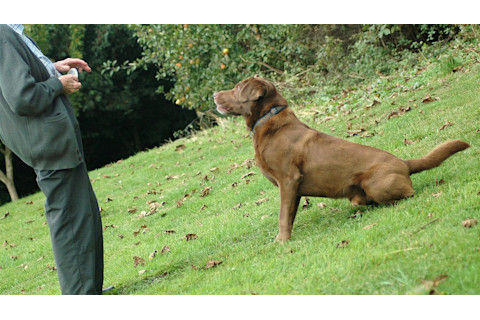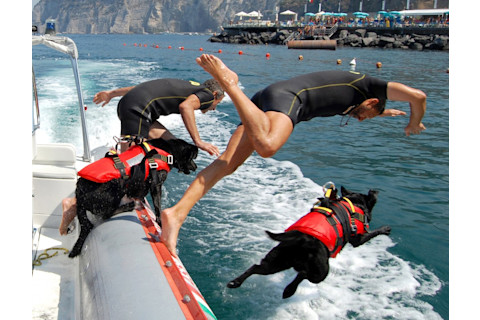
Italy's school for water rescue dogs, the Scuola Italiana Cani Salvataggio, has trained hundreds of animals in canine heroics. The dogs work on Italian police and coast guard boats, and with fire departments and the navy. They can even jump into the ocean from a hovering helicopter to save a person. They're pros at taking commands from humans. So researchers wondered if the dogs could help them understand what kind of command works best: Words? Or gestures? Biagio D'Aniello, a biologist at University of Naples Federico II, and his coauthors recruited 25 pairs of dogs and their owners to study the question. These included 10 golden retrievers and 15 labs. (Four other dogs were cut from the final analysis because their owners—not the dogs themselves, the authors are quick to point out—screwed up the commands.) In a bare room, owners gave their dogs four verbal directions: "sit," "lie down," "stay," and "come." Separately, they gave the same four commands using hand signals. Dogs learn to follow both kinds of commands at the water rescue school. The dogs had a higher success rate with hand signals than with verbal commands. Female dogs, especially, were better at following gestures than words. Male dogs did better with verbal commands than females did. Then the owners tested their dogs by giving them simultaneous verbal commands and hand signs—that didn't agree. They said "sit" while signing "lie down," or vice versa. They said "stay" while gesturing for the dog to come, or the opposite. The perplexed dogs usually chose to follow their owners' hand signals, not their words. The only exception was that when owners said "come" (and walked away) while signing "stay," their dogs tended to follow them. Maybe the animals were concerned about their mixed-up owners and thought they should stick close by. In a followup study they haven't published yet, D'Aniello and his coauthors repeated their experiment with both the dogs' owners and strangers. He says dogs followed gestures just as well from strangers as from their owners. But they had more trouble following verbal commands from strangers. It's another hint that dogs listen best when humans talk with their hands. D'Aniello says the results don't surprise him: "In my experience as dog trainer, I realized that with dogs it is better to communicate by gestures." His own dog, Flash, is a trained water rescuer, and D'Aniello says Flash has saved 10 lives over 7 years of service. Here's hoping Flash understands "Good dog!" no matter how it's said.

Images: top by thornypup (via Flickr); bottom courtesy of Biagio D'Aniello.
D'Aniello B, Scandurra A, Alterisio A, Valsecchi P, & Prato-Previde E (2016). The importance of gestural communication: a study of human-dog communication using incongruent information. Animal cognition, 19 (6), 1231-1235 PMID: 27338818













